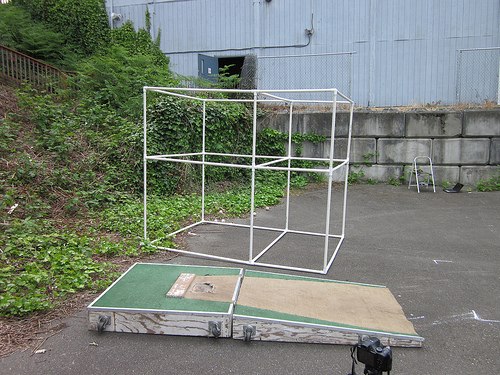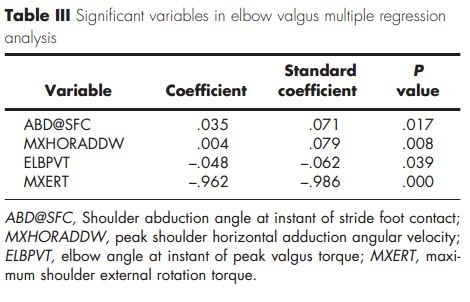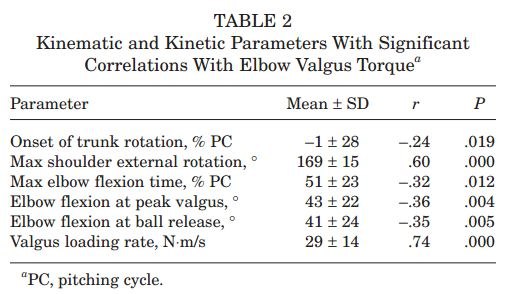How to Analyze Pitching Mechanics Without a Biomechanics Lab

There are a few writers and people out there who criticize me for talking about pitchers’ mechanics without having specific joint loads (kinetics), stating that it’s akin to “guessing” without any merit. Their claims that without a full biomechanical analysis (presumably using three-dimensional modeling), you can’t make any definitive statements about health and efficiency.
Well, as readers of this blog know, I am sympathetic to that argument – so much so, that I invested four years of my life (and many dollars) into building my very own biomechanics lab:

That’s the first iteration of our control object (which you need to film using multiple high-speed cameras to gain an anchoring position) at our old facility in North Seattle.
I’m no stranger to calculating the kinematics and kinetics of the pitching delivery, and I think I’ve learned a great deal by putting many pitchers through it. However, the idea that we must do this to make educated guesses about mechanics is simply wrong.
Understanding the Mechanisms of Injury
As I stated in my article about elbow injuries in pitchers, we do not yet know the definitive cause of UCL rupture (which requires Tommy John surgery to repair). However, research indicates high values of elbow valgus stress is primarily responsible for tension on the UCL and the prime contributor to joint loads about the elbow. Remember, the primary function of the ulnar collateral ligament is to stabilize the elbow while the ulna in the forearm is pulled away from the elbow joint (medial epicondyle).
You can test for this injury by doing an elbow valgus stress test (a video from my alma mater, Baldwin-Wallace College):
In the groundbreaking study by Dr. Werner et al (2002 JSES: Relationship between throwing mechanics and elbow valgus in professional baseball pitchers), Dr. Werner concluded that there were four significant variables that contributed to elbow valgus:
I wrote about these at length in my article about elbow injuries if you’re interested in a more detailed look at these variables and what they actually mean.
Applying it to Video Analysis
Since Dr. Werner’s research (and many additional papers that support her theories) indicates those four variables as being highly significant with regards to elbow valgus stress, if you see a pitcher who displays a high amount of shoulder abduction angle at stride foot contact (SFC), then it’s likely that that pitcher has higher-than-normal elbow valgus stress. While correlation does not equal causation, it’s pretty clear that these characteristics are linked to higher “joint loads” on the elbow.
Simple Physics: Force Application
However, instead of trotting out research papers, let’s think about this from a simple mechanical physics/engineering perspective. I recently posited that the “late launch” (as Ron Wolforth calls it) is inherently more efficient and less stressful on the elbow joint than an “early launch” exhibited by pitchers like Stephen Strasburg, where another player’s throwing shoulder is rotated far more into the target before maximum internal rotation angular velocity is reached.
A realization hit me a few years ago when I spoke to Dr. Murray Maitland at the University of Washington – instead of talking about complex kinematics and kinetics, he illustrated a simple point from an engineering perspective: Force is best applied in lines parallel to the desired direction of trajectory in the ballistic motion. (Of course, Dr. Marshall has been beating this drum for decades now.) This is obvious once you think of it from an engineering perspective – would you build a machine that throws a projectile in a circuitous path where the distal ends of the joints were held together by a pulley, or would you build it where the lever arm applied force in a straight line?
From a slightly more biomechanical point of view, think of it this way: The UCL stabilizes the elbow from being pulled apart as the forearm separates from the upper arm (humerus). If force is applied in a maximum sidearm position with an early launch, this theoretically maximizes valgus stress, while a more vertical delivery reduces it (like Roger Clemens’ delivery).
While a true vertical delivery may not be possible (ask Fritz Outman about that, though), getting closer to that should reduce stress on the elbow and possibly increase efficiency and release velocity of the pitcher.
Research tends to back this theory up, as Aguinaldo’s study (Am J Sports, 2009: Correlation of Throwing Mechanics With Elbow Valgus Load in Adult Baseball Pitchers) showed that a later trunk rotation in the pitching delivery and increased elbow flexion near peak valgus/ball release significantly reduced elbow valgus stress.
What You Need to Adequately Study Pitching Mechanics
Ideally, you get yourself a pair of high-speed cameras (or an iPhone 6) and film the delivery from overhead as well as from the side, but they’re not cheap anymore (good thing I bought five of them when I could!).
You can still use regular speed video to do some cursory analyses if you get the right angles, but it’s all about setting them up in a proper and repeatable way. I highly recommend getting an overhead shot (something Bill Peterson from RPM Pitching has been telling me to do for years) as well as a view from the side. That will cover all relevant angles that you want to see.
We take regular high-speed video to analyze our pitchers’ mechanics in the MaxVelo program to make sure the cueing is properly done, and I recommend you seek out someone locally to do the same for you – any pitching coach worth his salt will have invested in at least one high-speed camera.
But if you can’t find anyone, our new facility in Kent is just minutes from the airport – so come on by!
If you want to skip the analysis yourself, we do video analysis here at the facility when you are on-boarded. Any of our pitching programs include the service plus we’ll build you a program that works for you.
Comment section
Add a Comment
You must be logged in to post a comment.




Mike Voltmer -
Hey Kyle, great article. I have one of those Casio high-speed cameras you mentioned. What do you consider the optimal FPS setting to put it on? Also, what do you typically use to break down the film? I’ve used Kinovea in the past, but was wondering if there is something you prefer to that. Thanks.
drivelinekyle -
Great questions! I use 210 FPS for basic analysis videos and 420 FPS for specific stuff (release of a breaking ball or arm path, perhaps). We use Kinovea for basic stuff but we use a custom-build three-dimensional kinematic/kinetic software package to analyze joint loads if we do anything for research-specific tasks.
Hope that helps!